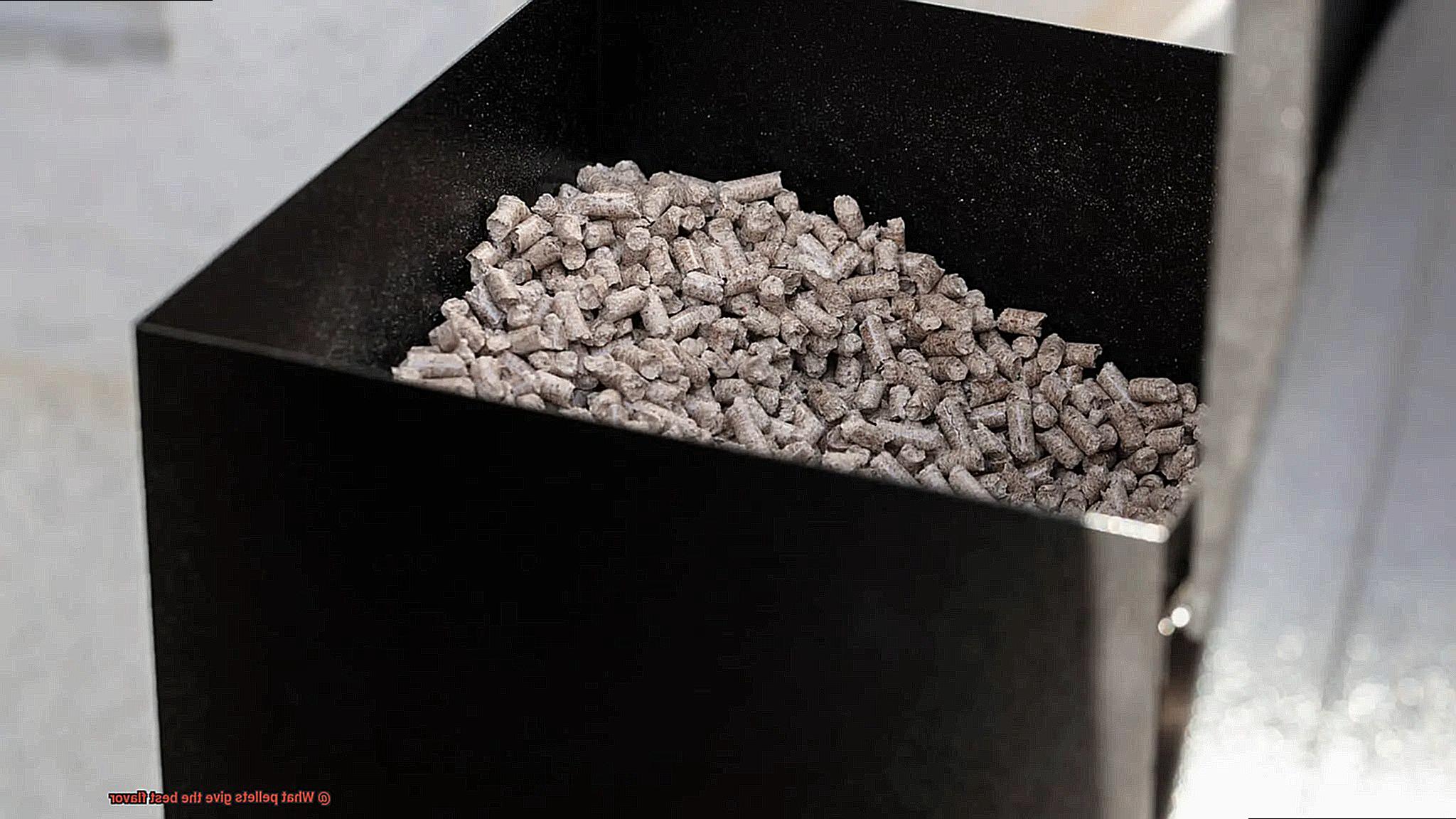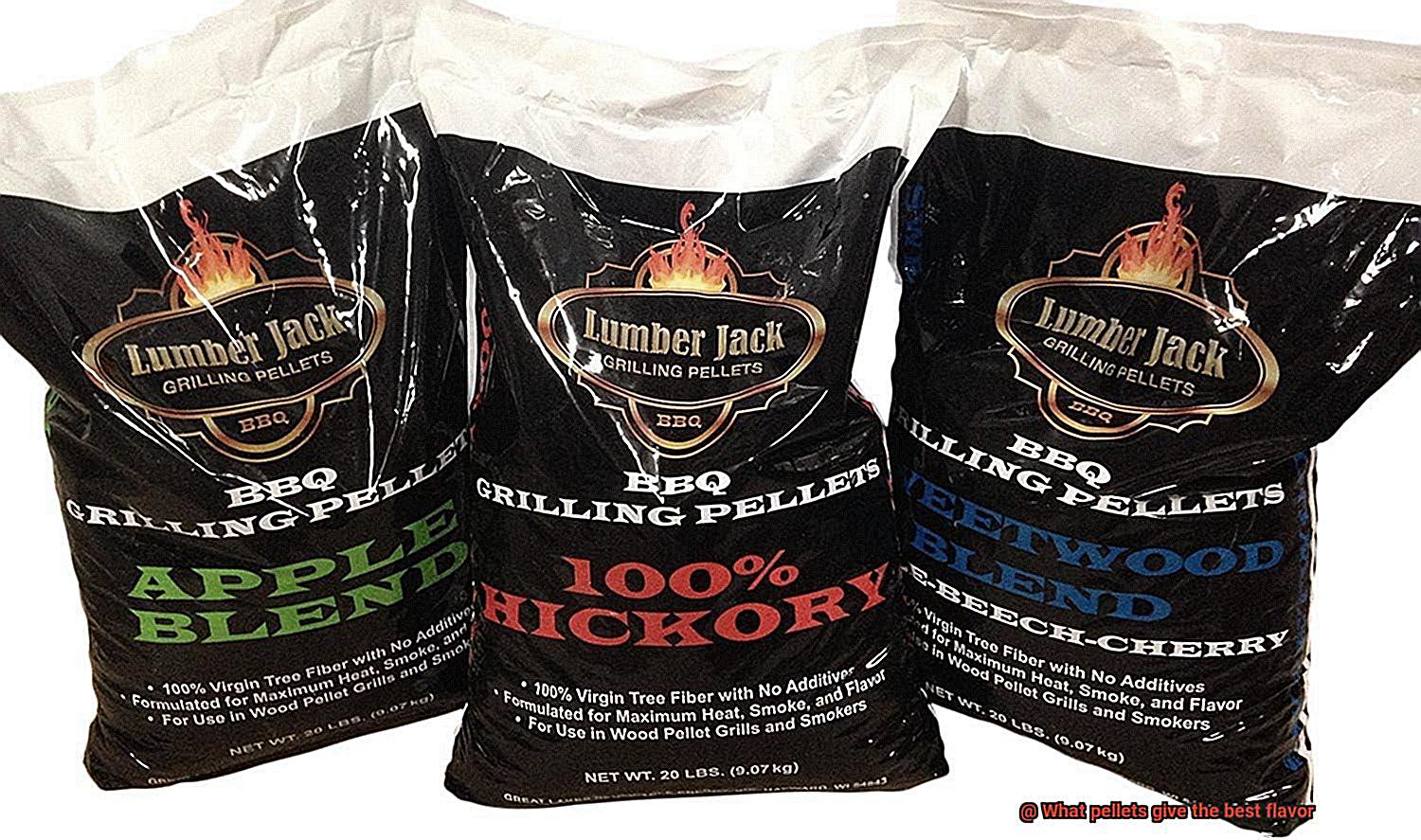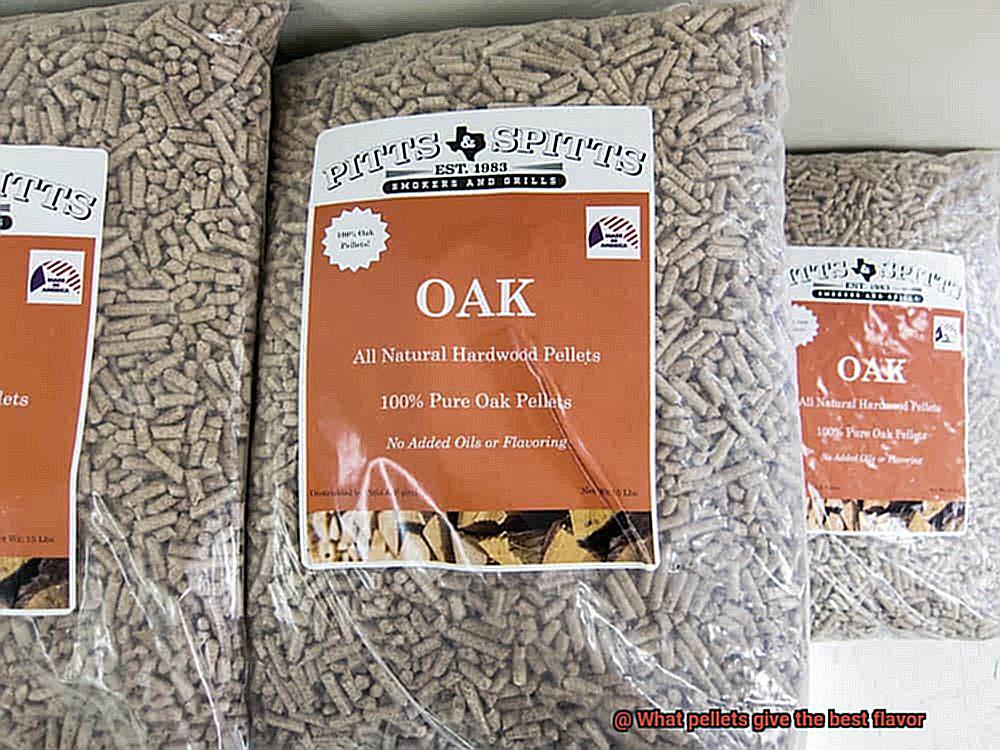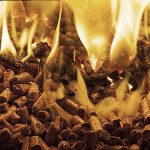As a grill master, you know that the right wood pellets can make all the difference in the world when it comes to flavor. But with so many options available, how do you know which ones will give your food that perfect taste?
From apple to hickory, mesquite to cherry, there are endless possibilities to choose from. But have you ever wondered what pellets give the best flavor? Whether you’re smoking meat, fish, or vegetables, the type of pellet you use can mean the difference between an average meal and a mouth-watering masterpiece.
For instance, hickory pellets provide a classic and robust smoky flavor that’s perfect for beef and pork. On the other hand, apple pellets offer a mild-sweet profile that complements chicken and fish dishes beautifully. And if you’re looking for something bold and earthy, mesquite pellets will do just the trick.
In this blog post, we’ll explore each type of wood pellet in-depth and explain how they can impact the taste of your food. By the end of this article, you’ll be equipped with all the knowledge needed to choose the perfect pellets for your next grilling adventure. So sit back, grab a cold one and let’s get started.
Contents
What Type of Food are You Grilling?
Before you do, it’s essential to consider the type of food you’ll be grilling. Why? Because the type of wood pellets you use can make all the difference in the flavor of your grilled dishes. So, what type of food are you grilling?
Let’s start with beef and lamb. These meats have a robust flavor that can handle strong and smoky woods like hickory and mesquite. Hickory pellets offer a classic smoky taste that pairs perfectly with red meat, while mesquite provides a slightly sweet and bold flavor. If you’re looking for a more complex taste profile, why not try blending different types of wood pellets to create a unique flavor combination?
When it comes to chicken and pork, milder pellets like apple or cherry are the way to go. Applewood pellets offer a sweet, fruity flavor that complements these meats well, while cherry provides a slightly sweeter taste. These pellets are perfect for creating a beautiful golden crust on your poultry and pork dishes.
Seafood lovers should consider using alder pellets for a delicate and slightly sweet flavor that pairs well with fish and shellfish. Alderwood is especially popular on the West Coast, where it is commonly used to grill salmon. If you prefer a stronger taste, mesquite pellets can also be used for grilling seafood.
However, keep in mind that different regions produce different types of wood, which can impact the flavor of your food. For example, oak from Missouri has a mild and smoky taste, while oak from Texas has a stronger and more intense flavor. Hardwoods from the Pacific Northwest tend to have a sweeter flavor than those from other regions.
Consider the Origin of the Wood
Look no further than the origin of your wood pellets. As a wood pellet expert, I can attest that the type of tree and where it was grown can have a significant impact on the taste profile of your grilled or smoked meats.
For instance, fruit trees like apple and cherry offer a sweet and fruity flavor, while mesquite and hickory provide a bold and smoky taste that pairs well with beef, lamb, and pork. On the other hand, woods like pine should always be avoided since they can impart a bitter taste and potentially harmful chemicals when burned.
But it’s not just about the type of tree. The sourcing of your wood pellets is also crucial. By selecting pellets from sustainably managed forests, you’re choosing an environmentally responsible option while ensuring high-quality wood with authentic flavors.

It’s important to be aware of any additives or fillers used in pellet production. Some manufacturers may use these to cut costs, but at the expense of flavor and quality. Always opt for brands that use 100% natural wood without any artificial additives.
Different Types of Wood Pellets and Their Flavors
Look no further than wood pellets. But with so many different types of wood pellets available, it can be overwhelming to choose the right one for your dish. In this article, we’ll break down the different types of wood pellets and their flavors, so you can elevate your grilling game.
Hickory Wood Pellets
Hickory is a classic choice for adding a strong, smoky flavor to beef, pork, and poultry. Its bold flavor pairs well with hearty cuts of meat and is perfect for those who love a robust taste.
Mesquite Wood Pellets
Mesquite is known for its intense, smoky flavor that can easily overpower lighter meats. It’s best paired with bolder cuts like brisket or ribs to add depth to the flavor profile.
Apple Wood Pellets
If you prefer sweet and fruity flavors, applewood pellets are the way to go. They’re perfect for grilling pork or poultry and add a deliciously subtle sweetness that pairs well with other seasonings.
Cherry Wood Pellets
Cherrywood pellets have a slightly sweet and mild fruity flavor that complements poultry or fish dishes perfectly. They’re ideal for those who prefer a milder taste but still want a touch of sweetness.
Alder Wood Pellets
Alderwood pellets have a mild and slightly sweet flavor that’s perfect for fish and seafood dishes. The subtle sweetness helps enhance the natural flavors of the fish without overpowering it.
Maple Wood Pellets
Maple wood pellets add a subtle sweet and smoky flavor that’s great for grilling pork or poultry. The delicate sweetness of maple pairs well with other seasonings and adds a unique twist to your dish.
Oak Wood Pellets
Oak is a versatile wood that can be used with almost any type of meat. Its mild smoky flavor is perfect for those who prefer a milder taste and want the other flavors of the dish to shine.
Hardwood vs Softwood Pellets
With so many options available, it can be daunting to choose between hardwood and softwood pellets. But fear not, as your expert on this topic, I’m here to break down the differences and help you make an informed decision.
First up, hardwood pellets. These pellets are made from dense woods like oak, hickory, and maple. Their slow-burning properties and high density make them ideal for smoking meats and other foods, resulting in a rich, smoky flavor that’s perfect for beef, pork, and other hearty meats. Plus, because of their density, they tend to last longer than softwood pellets, making them an excellent choice for long, slow cooks.
On the other hand, softwood pellets are made from trees like pine, spruce, and fir. These woods are less dense than hardwoods and burn faster, producing less smoke and flavor. However, they’re also more budget-friendly than hardwood pellets, making them an excellent option if you’re on a tight budget. Softwood pellets are ideal for shorter cooks or grilling more delicate meats like chicken or fish.
But what if you want the best of both worlds? Some pellet manufacturers offer blends of different wood types that provide a unique flavor profile that’s not achievable with single-wood pellets. For example, a blend of applewood and hickory can give your pork chops a smoky yet slightly sweet taste.
Ultimately, the choice between hardwood and softwood pellets comes down to personal preference and what you’re cooking. If you want a stronger flavor profile for your hearty meats, go for hardwood. If you’re on a budget or grilling more delicate meats, opt for softwood. And if you’re feeling adventurous, try out a blend and see how it elevates your grilling game.
How to Choose the Right Pellet for Your Needs
When it comes to grilling, choosing the right pellet can make all the difference in the flavor of your food. Here are five sub-sections to consider when selecting the perfect pellet for your needs:
Wood Type Matters

Different types of wood pellets will impart distinct flavors to your food. For instance, mesquite pellets are ideal for beef and game meats, while applewood pellets work well with pork and poultry. Hickory pellets are a classic choice for most meats, while cherry pellets can add a sweet and fruity flavor to your food. So, when deciding on the wood type, make sure it matches the meat you’re cooking.
Quality is Key
The quality of the pellet is critical when it comes to achieving an excellent flavor. Look for pellets made from 100% pure hardwood without any fillers or additives. These pellets will burn clean and hot, giving you the best flavor possible. On the other hand, cheaper pellets can contain fillers and binders that can affect the taste of your food.
Size Matters Too

Choosing the right size pellet for your grill is essential as well. Most grills are designed to use either 6mm or 8mm pellets, so make sure to choose pellets that match your grill’s specifications. If you’re unsure which size to use, check the manufacturer’s instructions or consult with a professional.
Origin Can Impact Flavor
Different regions produce different types of wood, which can impact the flavor of your food. For example, hardwoods from the Pacific Northwest tend to have a sweeter flavor than those from other regions. Oak from Missouri is known for its mild and smoky flavor, while oak from Texas has a stronger and more intense flavor.
Research Brands Before Buying

Lastly, consider the brand of pellet you’re purchasing. Look for brands that have a reputation for producing high-quality pellets with consistent flavor profiles. Reading reviews from other grill enthusiasts can also be helpful in determining which brand to choose. Some brands are known for their high-quality pellets and consistent flavor profiles, while others may vary in quality and flavor from batch to batch.
Tips for Using Wood Pellets
Grilling meat is a great way to enjoy delicious food, but if you want to take your meals to the next level, try using wood pellets. Wood pellets add a unique smoky flavor that can’t be replicated by any other method. However, using them properly is key to achieving the best possible taste. Here are five tips for using wood pellets:
Choose the Right Wood Pellets
The type of wood pellet you choose will have a big impact on the flavor of your meat. For example, mesquite pellets will provide a strong and bold taste, while cherry pellets will provide a sweeter and milder flavor. It’s important to choose the right wood pellets for the type of meat you’re grilling and the flavor profile you want to achieve.
Soak the Pellets
Soaking your wood pellets in water for at least 30 minutes before use can help them produce more smoke and flavor. The wet pellets will take longer to burn, allowing them to produce smoke for a longer period of time.
Use a Pellet Smoker
Using a pellet smoker is one of the best ways to use wood pellets for grilling. A pellet smoker is designed specifically for using wood pellets and will keep the temperature consistent throughout the cooking process. This ensures that your meat is evenly cooked and has maximum flavor.
Don’t Overuse Wood Pellets
While wood pellets add great flavor, it’s important not to overuse them. Too much smoke can overpower the natural flavor of the meat and make it taste unpleasant. A general rule of thumb is to use about 1/4 cup of wood pellets per hour of cooking.
Monitor Temperature
Wood pellets burn differently than charcoal or gas, so it’s important to monitor your grill’s temperature closely when using them. Use a digital thermometer to keep an eye on the temperature and make adjustments as needed. This will ensure that your meat is cooked evenly and has the perfect amount of smoky flavor.
Benefits of Using Wood Pellets
As an expert in the field, I can confidently say that using wood pellets for grilling has numerous benefits that will make you a grill master in no time.
First and foremost, using wood pellets is an environmentally friendly option. Made from compressed sawdust, they are a renewable resource and free from harmful additives or chemicals found in other types of fuel. By choosing wood pellets, you are not only benefiting your health but also doing your part to protect the environment.
One of the most exciting advantages of using wood pellets is the unique and delicious flavors they produce when used for grilling. The type of wood used to make the pellets affects the flavor of the food, allowing for experimentation and customization in cooking. Whether you prefer the strong, smoky flavor of hickory or the sweet and fruity taste of applewood, there is a type of wood pellet perfect for your palate.
Furthermore, using wood pellets is incredibly easy and convenient. They come in pre-measured bags that can be easily added to your grill, and the temperature control on a pellet grill is more precise than traditional charcoal grills. This means that you can cook your food evenly and avoid burning it, resulting in perfectly cooked and flavorful meat every time.
Lastly, using wood pellets can save you time and money in the long run. Pellet grills require less maintenance than charcoal grills because they produce less ash and do not require constant refueling. Additionally, because they burn cleanly and efficiently, less fuel is needed to achieve the desired temperature.
mmZAhM-qoMs” >
Conclusion
In conclusion, selecting the perfect wood pellets is paramount to achieving the ideal flavor when grilling. With a vast range of options available, from hickory to mesquite, apple to cherry, and alder to maple, each pellet type provides a unique taste profile that can enhance your grilled dishes. To ensure maximum flavor, it’s crucial to match the appropriate pellet with the food you’ll be grilling.
The origin of the wood also plays a significant role in flavor. Different regions produce various types of wood that can impact the taste of your food. Opting for high-quality pellets made from 100% natural wood without any additives or fillers is essential.
When using wood pellets for grilling, it’s vital to select the right size and closely monitor temperature levels. Soaking the pellets before use and avoiding overuse are also critical factors in achieving optimal flavor.
Using wood pellets has numerous benefits beyond enhancing taste. It is an eco-friendly option, produces distinct flavors, is easy and convenient to use, and saves time and money in the long run.






